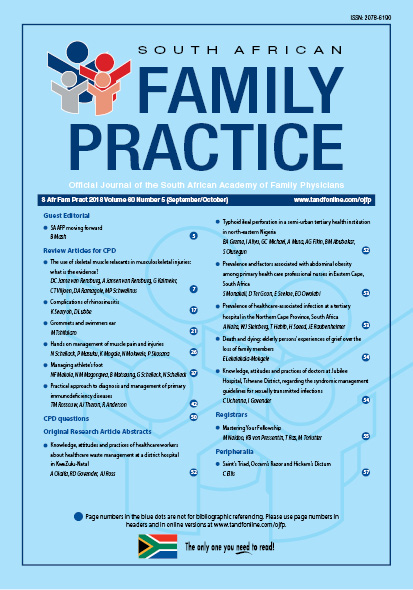The use of skeletal muscle relaxants in musculoskeletal injuries: what is the evidence?
Abstract
Skeletal muscle relaxants (SMRs) consist of a heterogeneous group of medications with a side effect profile of concern. The aim of this paper was to review the evidence of use of SMRs in the treatment of sports injuries. A literature search between 2005 – 2018 (Ovid MEDLINE, SPORTDiscus and SCOPUS) were conducted. In addition, citations within articles were searched, and the most commonly prescribed SMRs in South Africa were also used to explore the literature for additional publications. Relevant studies that met the inclusion criteria were selected. Clinical recommendations for general practitioners are given based on the Strength of Recommendation Taxonomy (SORT) level of evidence. Combination drugs rather than single agents are mostly used, however the effectiveness of SMR agents, single and in combination, as well as its significance as opposed to analgesics and non-steroidal anti-inflammatory drugs, still has to be evaluated. Evidence suggest SMRs to be probably effective for use in non-specific lower back pain (acute and chronic lower back muscle strains, ligament sprains, soft tissue contusions), as well as for whiplash associated disorder, mechanical neck disorders, piriformis syndrome, lateral epicondylosis, and plantar fasciitis. It does not appear if there is a role for SMRs as part of combination management for acute cervical strains, post-exercise muscle soreness or myofacial pain syndrome. However, substantial evidence to confirm the use of SMRs in the treatment of sports injuries have not been adequately investigated and is currently largely based on case reports and general reviews.

